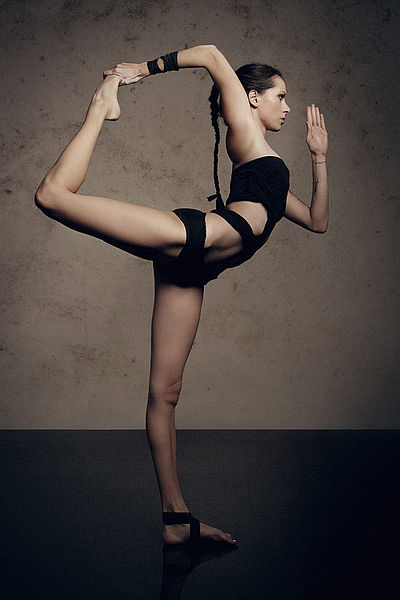The Ashtanga Vinyasa system is a beautiful practice that is the asana branch of classical Eight-Limbed Yoga.
It consists of six challenging sequences of postures, which are to be learned in a linear progression and practiced daily. When an uncomfortable or disconcerting posture is encountered, the method is to work through those places diligently until the body and mind soften. Many people view this system as rigid, and are deterred, shrinking away from Ashtanga and seeking out other forms of yoga.
The Ashtanga system is demanding and even those of us who become dedicated Ashtanga practitioners struggle on occasion with the rules. The system is designed to make us face our anxieties, ambitions, attachments and fears. And, as we begin to unravel these, the mind often revolts.
When this happens, we may find ourselves renegotiating with the system, succumbing to the temptation to skip postures, or even practice days, altogether. Sometimes, these little revolts devolve into a total devaluation of the practice itself, even reducing asana practice to merely a form of deep stretching that should always feel pleasant.
Of course, on the other side of the spectrum, there are Ashtangis who respond to these occasional mental revolts with an aggressive approach to the practice, usually to their own depletion and injury. They too have allowed their minds to intervene and to prevent them from really facing themselves, and withstanding their egoistic tendencies. Thus, among practitioners, there are two poles on the spectrum of response to the rigidity of the Ashtanga system. Both poles lead the practitioner astray. Not surprisingly, the path lies somewhere in the middle.
The practice of Ashtanga is an excellent tool to view the fluctuations of the mind. Oftentimes, the mind behaves like a pendulum, swinging between extremes of attachment and avoidance. These extremes are evident by the reactions of the Ashtangi to the system itself. When we practice asana without succumbing to these extremes, we can begin to undo the psychophysical patterns that underlie them.
The method is to create a container in which we can observe the modifications of our minds. The container is like the controlled environment of an experiment, and the Ashtanga system provides precisely that: a control against which we can more clearly observe our own behavior of physical and psychological conditioning.
Within this system, we practice the same postures over and over again until we arrive at something passable, and only then do we move on. The attempt to advance is part of the practice, because in watching ourselves make that attempt, we learn so much more about ourselves. Our minds are ever changing, as is the world around us. In the face of so much change, it can be very difficult to catch sight of our own mental patterns. In following a system of asana, adhering to it diligently, we can create the stability to observe and measure our minds.
As Ashtangis, we have agreed to use the system to observe the inner workings of our minds, and to slowly unravel our patterns of reactivity. In this endeavor, the greatest benefits come from continued, uninterrupted, and daily practice, in which we observe our reactions and impulses without allowing them to disturb the careful orchestration of our movement, breath and gaze. Thus, when we have an impulse to stop practicing or to avoid a particular pose or finish early, we do not respond to it.
By surrendering ourselves to the system during our practice time, we are slowly diffusing our reactive patterns. We are making ourselves more stable in the face of the ever-changing flow of our thoughts and emotions.
If we submit to the rigors of this practice every day, we begin to create a space of balance and equanimity that slowly expands to encompass the rest of our lives, and we can become less reactive beings. The effect is that we no longer look for the path of least resistance, but we accept what is before us, in all its challenges, with evenness. The practice, in theory, thus makes us better people, on and off the mat, but only if we surrender to the system.
If we excuse ourselves from the demands of the system, by not practicing regularly or thoroughly, then we are allowing our attachments and aversions to derail us from our path. We are thus depriving ourselves of the positive impact that the practice can have on our minds, and we are resigning ourselves to being victims of our own responses.

Since such a significant part of the practice is to become aware of that tendency and not react to it, straying from the system is almost like abandoning the pursuit entirely.
For those of us who show up for practice and become dedicated yogis, we then face the daily question of how hard to push ourselves in asana. The system leaves that entirely up to us. We often find ourselves swaying between the extremes, as our minds vacillate between ambition and defence, trying too hard and abandoning effort. On one end, we might push ourselves to impose an idea of progress, and by doing so cause damage to ourselves.
The flip side is that we might find all kinds of excuses to avoid what comes next or skipping what is most difficult, in the name of protecting ourselves from injury. In the practice of Ashtanga, the path lies between these two poles, and the best teacher to guide us along the middle is gratitude.
If we are grateful for our bodies, we will not carelessly injure them. But we will also not let ourselves off the hook and devolve into laziness, for that is just another way of being ungrateful for the gift of life. If we are grateful for our health and well-being we will embrace that gift and exercise it to the fullest. On the same account, if our bodies or are truly unwell, we will be gentle with ourselves, and take care to bring ourselves back to health. The greatest teacher, then, is our own sense gratitude for the gifts that we have and for the chance to practice at all.
Mental afflictions are the greatest sufferings we will ever experience, and practicing asana prepares us for how we will face them.
Fear often surges as we begin to practice a new pose. Our minds create a multitude of reasons why we cannot face that challenge. We tell ourselves we are not ready, not strong enough, too stiff, injured, sick, tired. And we either stop or skip it and move onto something more accessible. But usually the excuses have more to do with fear: fear of failure, fear of embarrassment, fear of being uncomfortable. All of these fears are ironic, since life is generally a pursuit that embarrasses us, makes us squirm, and rarely bestows upon us what we would label success.
While Ashtangis are often criticized for being goal-oriented, the attempt to progress has its point just here. If we never attempt to move ahead, we are succumbing to the opposite extreme of complacency, not pushing, not engaging in the experiment. This is our time to prepare for the other fearsome difficulties we will encounter in life, the ones from which we cannot choose to walk away. If we cannot overcome our fears for two hours each day, we will be ill-prepared for the larger ones that arise. And the moment, when we most desperately need to be prepared for, is guaranteed to surprise us.
Ashtanga is meant to challenge each of us, and so it is always subject to individual adaptation.
When we are blessed with good health, we need fewer modifications. But when necessary, Ashtanga can be explored with endless modifications, even without movement and without activating poses.
There are physically disabled people who practice yoga without the use of limbs, and they are inspirations to be admired. They tackle asana mentally, as a practice of sensation and breath, knowing they will never achieve the ideal physical form, but they practice all the same, with depth and intensity and integrity. Watching them, we can learn powerful lessons about persistence, but it does not mean we should emulate them by ceasing to use our limbs in yoga. They would likely resent a healthy, young, able-bodied person using them as an excuse to have a lazy practice.
What we can appreciate in their approach to yoga practice is their own gratitude for the abilities they do have. We can seek to embody the same gratitude and compassion for ourselves and for others, and the unique situations and suffering we each endure.
For all of us, there are times when expecting anything more from ourselves than to lie on a bolster would be cruelty. And there are other times that not practicing all the way through second series would be laziness full of limp excuses. Sometimes these days are back-to-back, and only a sense of gratitude can tell us which day is which.
Gratitude for wellness when we are bursting with health, and gratitude for what little health we have when it is so meager. As though health is a ball of precious light energy that pulses, waxes and wanes; if we hold it gently, gratefully, coax out of it what warmth it will give, and bow to its generosity, we will likely never disrespect it by asking more than what it has or by seeing it as dimmer than it truly is.
To be embodied, to have the physical ability to practice at all is a miracle, and we should practice with gratitude to be here to practice. Within the Ashtanga system, we try to progress, but progressing is not actually attempting to achieve anything materially. It is an act of embracing the gift that is our life, showing gratitude for the body we have, and being willing to face whatever is arising in that moment.
The idea of intentionally inflicting pain upon ourselves is an outrage and disrespectful to the precious gift of health. But true pain and mild discomfort are the same distance apart as intelligent caution and fear. Approaching asana practice with gratitude, we generally find that, rather than leaps and bounds or stagnation, we will advance through the poses and practices slowly, steadily, building upon our physical strengths as our minds grow softer.
At the most desperate times of life, the Ashtanga yoga system can be a buoy that tells us that life has a pull, a direction that encompasses more than just our lonesome selves. If we grasp it with conviction, we discover it is not a buoy. It is a golden staff that plummets through the depths of the ocean, through the core of the earth, and out the other side, infinitely, as it reaches skyward. It encompasses generations of wisdom, and unravels time into eternity. It simultaneously bestows upon us perspective for our anguish and compassion for our pain.
And so we practice Ashtanga Vinyasa, because, for now, we are embodied, and that miracle is a source of boundless gratitude. Because it is the system that we have chosen, or that has chosen us. And, because, as one of my teachers once said to me, “What else would you do?”
Love elephant and want to go steady?
Sign up for our (curated) daily and weekly newsletters!
Editorial Assistant: Ffion Jones / Editor: Renee Picard
Photo: WikiCommons & elephant archives


 Share on bsky
Share on bsky





Read 1 comment and reply